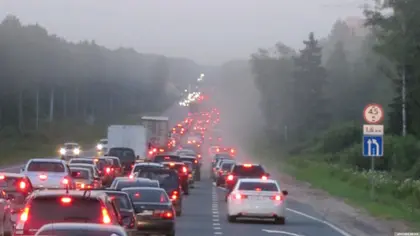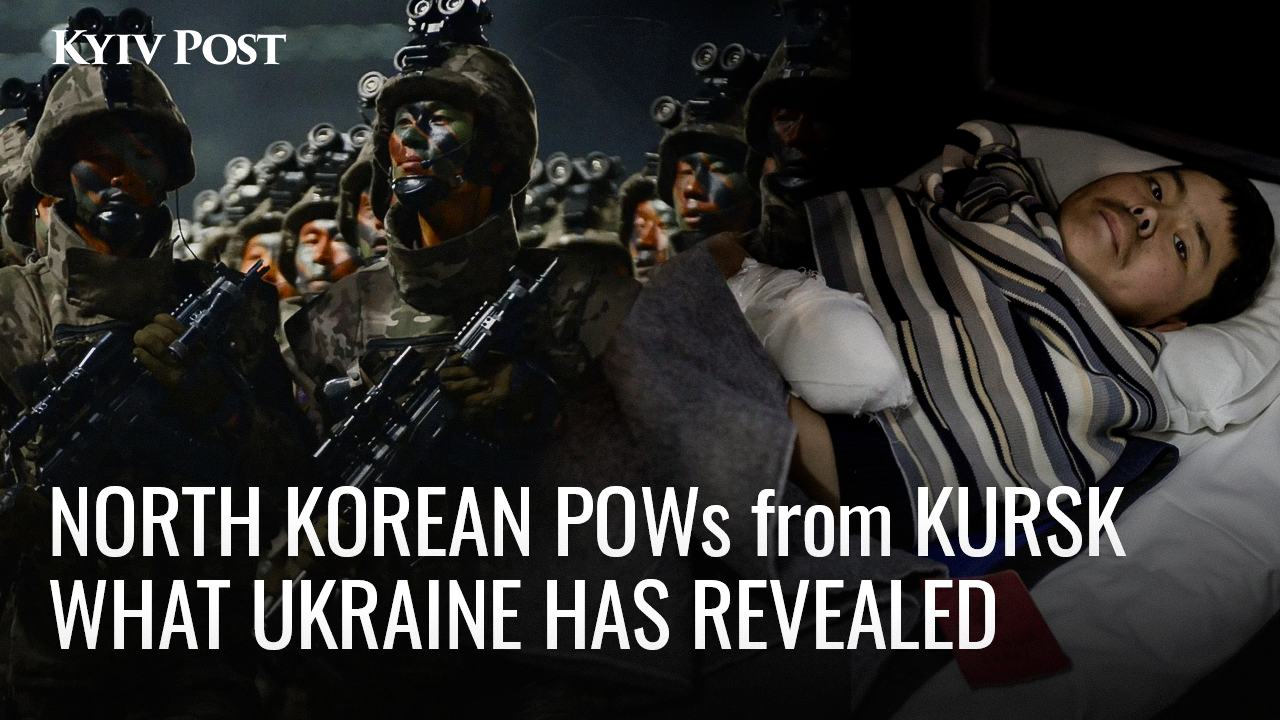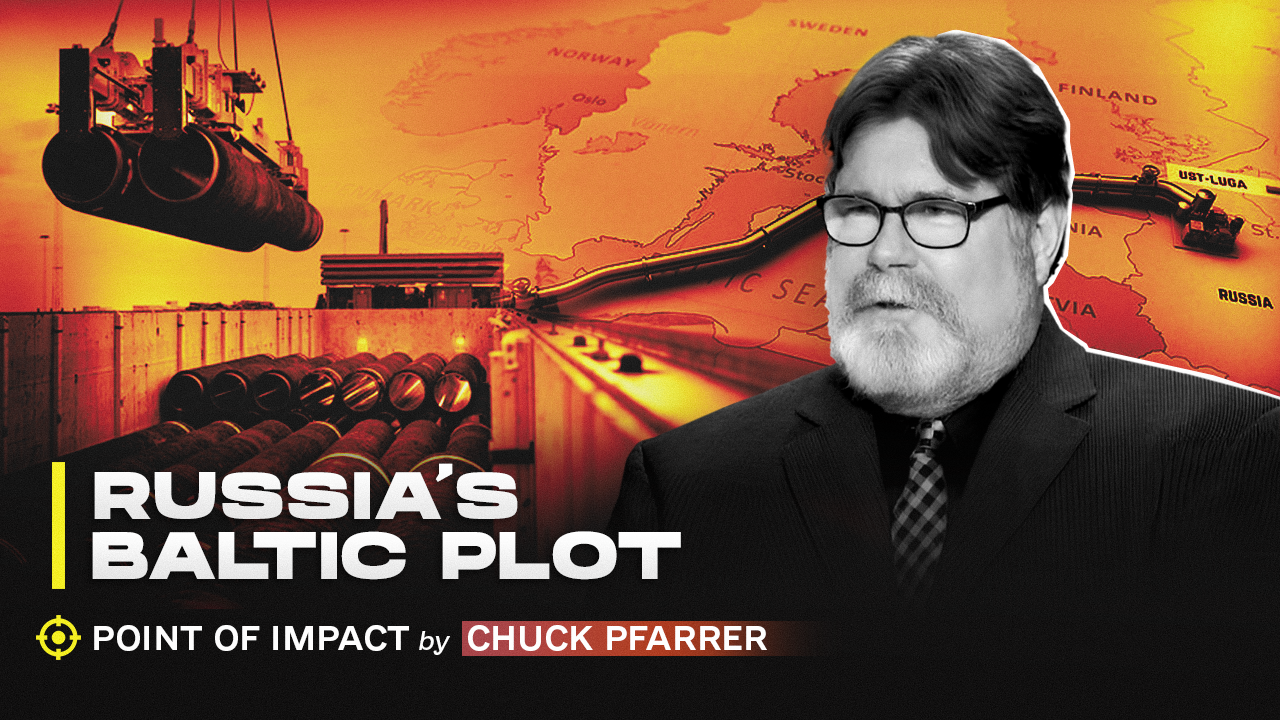Officially, per the Kremlin, there were no problems and definitely no traffic jams. Ukraine’s Monday attack on the key Kerch Road Bridge connecting Moscow-occupied Crimea with the Russian mainland would force tourists into a little detour, and nothing more. That was the party line.
In a Monday evening televised meeting attended by President Vladimir Putin himself, the Kremlin-appointed governor of the Russia-occupied Crimea region, Sergei Aksyonov said traffic was moving well following the blast, and that the worst delays – which were minor – were near the city of Dzhankoi, at the northern entrance of the Crimea peninsula.
“There are only 50 cars waiting,” Aksyonov said. “(F)or this time of year, for us, that’s basically no wait at all. There are no queues at present, and therefore there has been no impact on traffic as a result of the problems with the bridge (between Russia and Crimea).”
JOIN US ON TELEGRAM
Follow our coverage of the war on the @Kyivpost_official.
State television showed the Russian leader nodding thoughtfully and making notes during Aksyonov’s report.
But on the Russian internet, the reality of the forced shutdown of the critical transport link the Kerch bridge – according to news reports probably due to a successful attack by Ukraine-operated kamikaze motorboats – painted a dramatically different picture.
Tens of thousands of Russian summer holidaymakers were forced to sit in road queues for hours and drive hundreds of kilometers out of their way. Parents found themselves suddenly unable to drive their kids home legally. And many motorists drove without functional car insurance.

Putin and Xi Praise Ties, Hours After Trump Sworn In
Aksyonov and other Russian officials said that people wanting to drive to or from Crimea, until the bridge is repaired, will have to detour north via Russia-occupied portions of Ukraine’s Kherson and Zaporizhzhia territories.
In the neighboring southeastern region of Zaporizhzhia, which is heavily targeted by Kyiv's counteroffensive, the Moscow-installed governor Yevgeny Balitsky said officials will keep the route “safe”.
“Road traffic will be in place with maximum convenience for our citizens through the new region,” Balitsky said.
Crimean officials assured drivers that the route was reliable. “It is a famous route. A very good one, along the Azov Sea, great scenery.”
Russia’s Interior Ministry spokesperson Irina Volk in a late Monday statement said the detour would add 5-6 hours and 400 km. to most road trips. She warned that travelers “choosing” to take a route through the occupied-by-Russia cities of Mariupol, Dzhankoy and Melitopol would need extra paperwork.
“To travel along this alternative route (Note: via portions of Russia-occupied Kherson and Zaporizhzhia regions), you must have passports for adults, birth certificates for children and documents for the car with you,” Volk said. Stops were only permitted in towns or at state-designated temporary rest stops, she said.
Volk’s warning, issued in the name of Russia’s national police, technically was in conflict with the Kremlin’s Sep. 30, 2022, announced annexation of the two Ukrainian regions making them – on paper at least – Russian territory where a Russian family may travel freely without carrying their children’s birth certificates with them at all times.
Kyiv Post was unable to determine how many tourist families with children were affected by Volk’s order. In 2021 some 1.5 million tourists – overwhelmingly working-class Russian families going on an economy seaside holiday in July or August – visited Crimea, according to industry estimates.
Other motorists wondered, by re-routing through Russia-occupied Ukraine, as opposed to just driving straight home via the Kerch bridge, whether their Russian car insurance would work.
Practically all agreed that where the government said traffic was moving, often, it wasn’t moving much.
Google Maps traffic searches of the E14 road and M14 highway, connecting northern Crimea with the Russia-occupied cities Melitopol, Berdyansk and Mariupol on Monday registered multiple road sections of slowed or stopped traffic up to 25 km. long, particularly around the Chonhar checkpoint, at the bottleneck northern narrows of the Crimea peninsula.
According to Google Maps, the traffic jam of those trying to leave crimea has reached 10 kilometers.
— Anton Gerashchenko (@Gerashchenko_en) July 17, 2023
Russian Hospitality Union reports that at least 50,000 tourists are currently in Crimea and most of them arrived on their personal vehicles. pic.twitter.com/MrIFlDrhbc
One local driver posting in a Telegram channel for discussing traffic conditions in south-east Ukraine reported a stretch of crawling traffic more than 30 km. long, in both directions near the village of Shyrokyne, and griped about big city motorists horning into the queue.
“Like always, license plates from Moscow drive differently from the rest of us. Don’t forget that locals call this ‘The Road of Death,’ don’t let someone stick his beak in front of you!”
The Russian motorist-focused chat group Probka Na M4-Novosti C Yuzhnym Aktsentom (Traffic Jam on M4 – News with a Southern Accent) reported a 16-kilometer traffic jam on the M4 in Russia’s western Rostov region.
The Telegram channel KPP Chongar Chat in a subsequently deleted post warned that some shop owners along the detour route had jacked up water prices by eight to ten times. Fuel was available but fuel stations had locked their bathrooms and were demanding 500 rubles (approximately $5.50) for women or children to use them, the post said. Other motorists reported reasonable prices and adequate road quality.
Road authorities were operating a total of seven “special roadside rest areas” along the M-14 and M-18 highway stretches designated as the official detour route, and martial law banning nighttime travel on those roads was temporarily canceled, Kremlin-sponsored military correspondent Vladimir Rogov reported on Tuesday.
Pro-Russia television channels in the Kherson region showed small groups of local volunteers handing out water bottles to motorists and claimed regional authorities were prepared to handle oncoming vehicle masses. The independent Russian news platform Astra showed a “rest area” near a secondary road in Russia’s Tamansk region: roadside facilities included an army field kitchen doling out porridge, two tables with several dozen water bottles, and a car queue stretching to the horizon.
You can also highlight the text and press Ctrl + Enter













